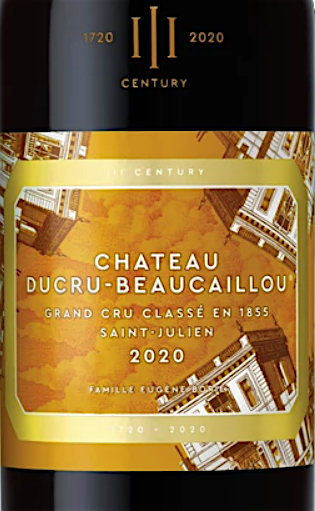
Château Ducru-Beaucaillou
33250 Saint-Julien-Beychevelle
Tél. : +33 (0)5 56 73 16 73
ducru-beaucaillou@ducru-beaucaillou.com
www.chateau-ducru-beaucaillou.com
Château Ducru-Beaucaillou is a vast 245-hectare estate, including 75 hectares of vines, ideally facing the Gironde estuary, and is one of the most legendary and exemplary crus of the Médoc and Saint-Julien appellation. Second Cru Classé in 1855, and celebrating its 300th anniversary in 2020, this jewel of the Médoc with its Victorian architectural style, once owned by founding families such as the Ducru, Nathaniel Johnston and Borie families, has remained in the Borie family since 1942. Ducru-Beaucaillou is the only château to bear the characteristics of its terroir in its name (large, fine Günzian gravel from the Pyrenees), guaranteeing wines that are balanced, elegant, refined and uncluttered, without overpowering or ostentatious displays.
Ducru-Beaucaillou boasts three hundred years of history. However, this history began well before 1720, with the estate first appearing in the 13th century. Until 1720, the estate belonged to the Bergeron family. Then, after the French Revolution, in 1795, the estate passed into the hands of the Ducru family (the third family to settle there) and experienced its first boom. This family gave its name to the château. Bertrand Ducru soon decided to make major modifications to his large home and to the various technical wine-making facilities. To improve his winemaking techniques, he built new cellars. These were built by a famous architect of the time: Paul Abadie, the same architect who designed the Basilique du Sacré-Cœur de Paris in Montmartre.
The Ducru family made a number of modifications to the residence, and restored the vineyard and winery buildings. These investments led to the expansion of the estate, the transformation of the house into an elegant chartreuse overlooking the estuary, and its classification as a Second Cru Classé in the imperial classification of 1855.
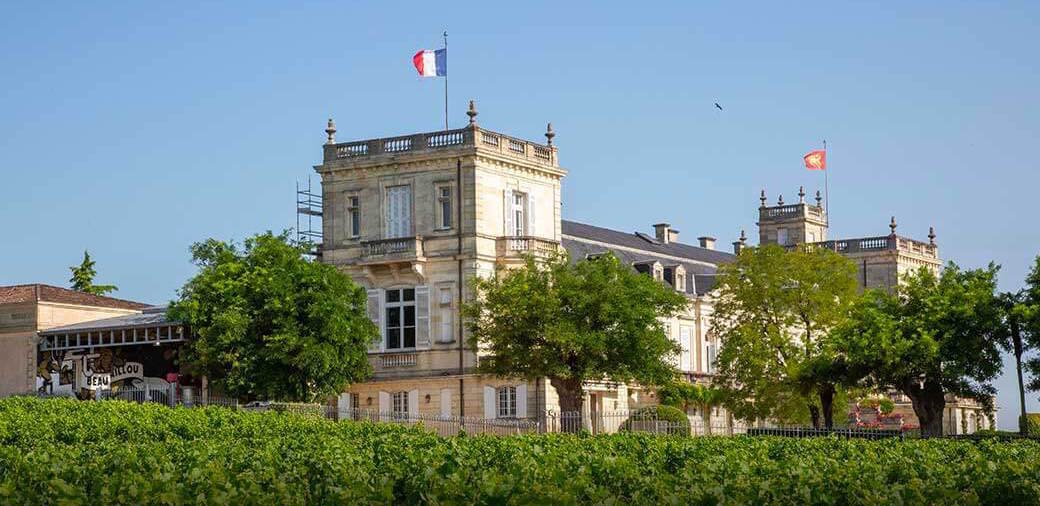
The Château then passed through the hands of two different families, including the Johnston family, well known in the Bordeaux region for their wine trading activities since 1734. In 1866, the château experienced a second turning point with the arrival of Nathaniel Johnston. A former polytechnician and graduate of the Ecole des Mines, he was a civil engineer. Himself a wine merchant in the family business, on returning to Bordeaux he acquired Ducru-Beaucaillou as well as Château Dauzac in the Margaux appellation.
For the record, it was at Dauzac that bouillie bordelaise was developed, on the initiative of Nathaniel Johnston, assisted by Ernest David and Alexis Millardet. Nathaniel Johnston was the first owner in the history of this anti-fungal treatment to use this preparation (highly effective against mildew) on his vines. The new owner of Ducru-Beaucaillou also surrounded himself with the best experts to modernize the estate.
Ducru-Beaucaillou then passed into the hands of other wine merchants, including the Desbarats family (a transfer due to the financial crisis of 1929), before this same family sold Ducru-Beaucaillou 12 years later to Francis Borie, himself from a family of wine merchants of Correze origin). In 1941, the Borie family took possession of the château.
The Borie family has been established in Gironde since 1900, settling near Pauillac. This family of “peasant” origin initially traded wines in Northern France and Belgium, before moving on to the rest of the world. Their decision to invest in the Médoc was a response to a specific need: to acquire vineyard assets in the Médoc region to ensure the best possible supply of wines for their customers, and to guarantee them quality follow-up.
Owners of Château Grand-Puy Lacoste in Pauillac (5th Cru Classé in 1855), the Borie family are making Ducru-Beaucaillou even better. Bruno Borie (3rd generation), grandson of Francis Borie and son of Jean-Eugène Borie, took over the reins in 2003. Together with his sister, he continues the work of his father and their predecessors, enabling Ducru-Beaucaillou to rise even higher in the firmament of great Bordeaux wines. His brother, François-Xavier Borie, manages Château Grand-Puy Lacoste with his children. The family also owns Châteaux Ducluzeau, Lalande-Borie and Fourcas-Borie.
Under the charismatic Bruno Borie, Ducru-Beaucaillou entered an era of renewal and above all modernism, with major works such as the overhaul of the old winery and the addition of a brand new winery built in 2000 (operational in 2011) by architects Luc Arsène-Henry and Alain Triaud. Bruno Borie is also working on improving the vat room to ensure more precise, parcel-by-parcel vinification, without forgetting the vines (the essential element) by applying the “lutte raisonnée” method to the 105 hectares of vines. Bruno Borie will also be taking care of the interior of the château, in the more private and receptive areas, by reviewing the decoration. It has been completely redesigned with a more contemporary look, without detracting from the soul of the property.
Bruno Borie is a gifted communicator, proactively energizing all aspects of the estate with effective storytelling. In 2020, the château celebrated its 300th anniversary, and took the opportunity to revamp its labels with a series specially dedicated to this extraordinary event.
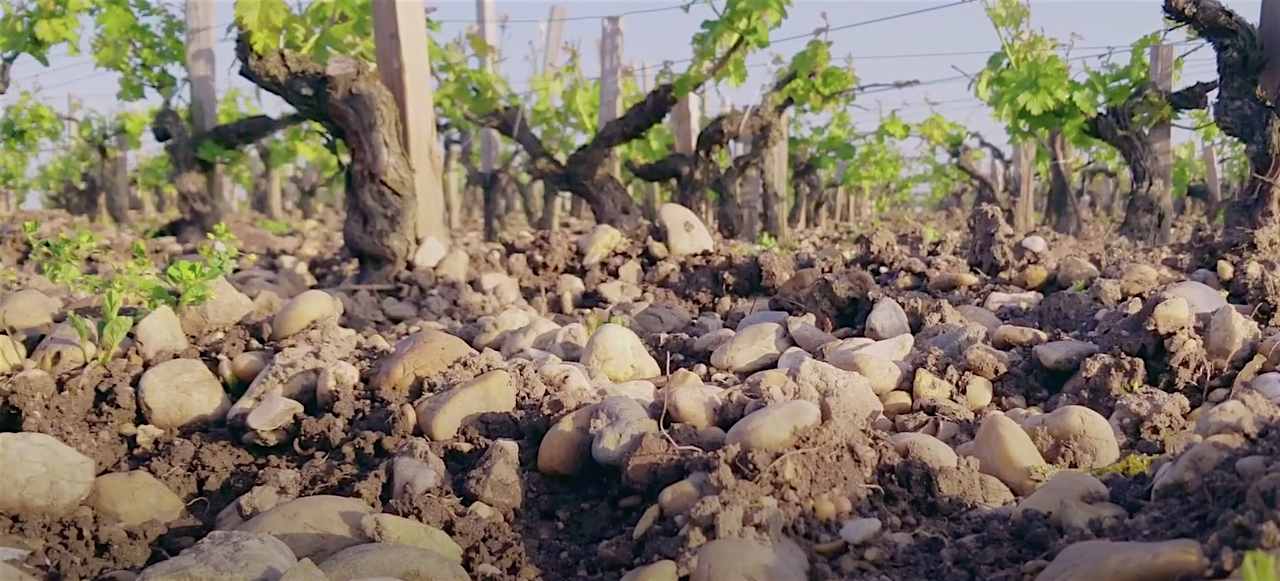
Ducru-Beaucaillou owes its name to its terroir of “large, beautiful pebbles”, which expresses itself in the finesse and elegance of its wines. The DNA of Ducru-Beaucaillou wines is to be found in these soils and subsoils: pebbles rolled from the Pyrenees four million years ago (Güntzian) to initially form the banks of a primitive Gironde and this proximity to the estuary. This stony terroir of Güntzian gravel with its poor soils is ideal for vine-growing. The vines draw the nutrients they need from deep in the soil. During the summer, the pebbles retain the heat of the day and release it back to the vines at night to help ripen the grapes. The plots overlook the Gironde estuary. This topographical situation ensures an exceptional micro-climate for perfect ripening of the great Cabernet Sauvignon and the balance of the Merlot, all hand-picked. The estuary, which is around 5 kilometers wide at this point, protects the vines from the cold in winter and excess heat in summer, as the estuary water is stirred up 4 times a day (by high and low tides) and ventilates the château's plots. All châteaux with an eye on the estuary are better protected than inland châteaux. The Atlantic Ocean, barely 30 kilometers from this part of the Médoc, also protects the vines.
Château Ducru-Beaucaillou's vines are cultivated using sustainable methods. Vineyard management is respectful of the environment. Insecticides are replaced by pheromones and chemical fertilizers by manure. This veritable “culture raisonnée” has enabled the vineyard to acquire ISO 14001 certification in 2016, as well as level three Haute Valeur Environnementale certification.
They are made up of one-third Merlot (on the lower, more clayey and sandy part of the hilltop) and around two-thirds Cabernet Sauvignon (on the higher, gravelly middle part of the hilltop). Some parcels also include old vines that draw the essence of the terroir from deep within the soil. The grapes are meticulously harvested by hand, and vinification is carried out in the cellar using traditional methods. The precision and attention paid to these different stages ensure that Ducru-Beaucaillou wines fully express their terroir.
During the harvest, fifty winegrowers harvest the grapes by hand with the greatest care. The bunches are first selected in the vineyard, then optically sorted on arrival in the vat room. Vinification then takes place in oak and stainless steel vats, allowing the identity of each plot to be expressed in the blends. After vinification, each batch is tasted several times by consultant oenologist Éric Boissenot (the Left Bank's favorite oenologist) and his teams.
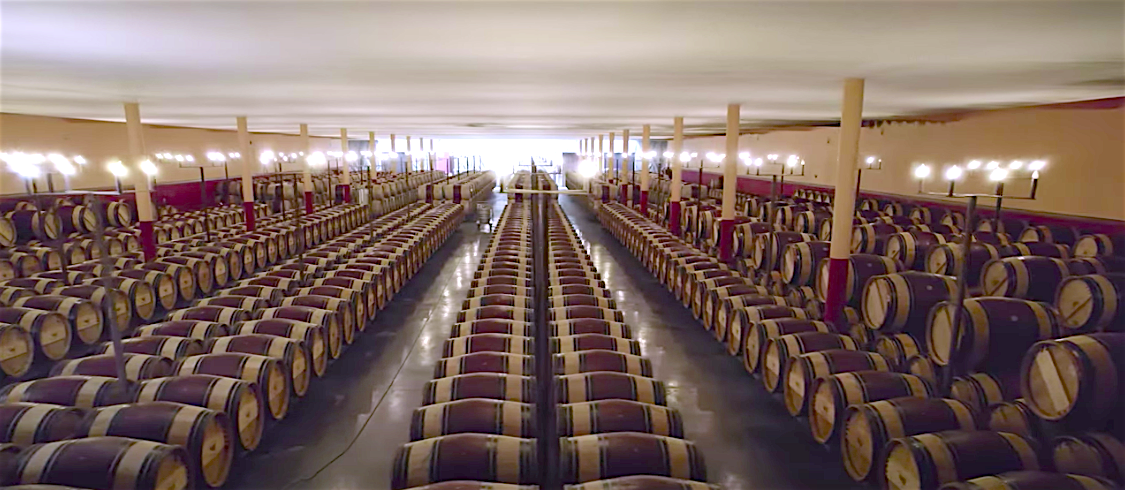
Ducru-Beaucaillou wines require 18 months of barrel ageing, compared with 12 months for other crus. The second founding element of Ducru-Beaucaillou's methods is the systematic use of new barrels for reasons of hygiene, as wine is considered at the beginning of its life as a food element requiring a perfectly sterile container. Finally, barrel ageing gives the wine a capacity for ageing, through the exchange or combination of tannins from the wine and the oak barrel. Behind every bottle of Ducru-Beaucaillou, more than fifty pairs of hands are involved, from harvest to bottling. Every involvement counts, every gesture is measured.
Ducru-Beaucaillou wines are an absolute reference in the Médoc. Both classic and modern, the Grand Vin is a lesson in elegance. Indeed, the hallmark of the wines produced by the Borie family is to seek out and offer elegance without ever being overbearing, overpowering or overly demonstrative, using gentle vinification techniques. As the wines evolve, they are regularly distinguished by empyreumatic aromas of cedar and cigar box. On the palate, balance prevails, with very broad mouthfeel in terms of wine weight, but never coarseness or harshness. It has a beautiful, slightly fruity attack, voluptuous fullness, silky tannins and an exceptionally long finish. It also has excellent ageing potential. In the end, the wines are marked by their sensuality.
In Bruno Borie's opinion, Ducru-Beaucaillou is a diamond with many proportionally cut facets. These facets are as many different vintages, acting as a testimony, a testament that it's up to each consumer to appreciate at its true value.
The estate also produces a second wine, La Croix Ducru-Beaucaillou. An original expression of the estate's terroirs, this wine is dominated by Cabernet Sauvignon, enhanced by Merlot and a hint of spicy Petit Verdot. Finally, another wine is offered. From the vineyards of Saint-Julien, Le Petit Ducru from Ducru-Beaucaillou is a balanced, harmonious wine.
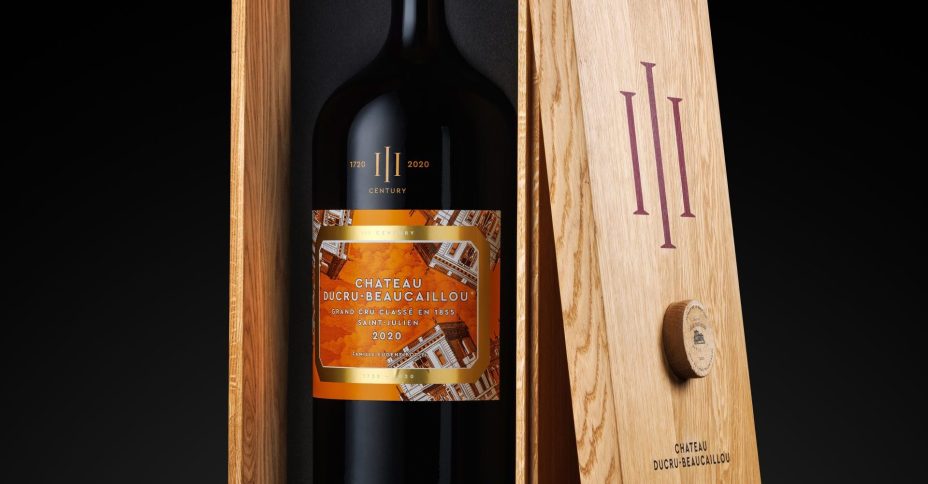
To mark the estate's tercentenary (1720-2020), Château Ducru-Beaucaillou has decided to launch a very limited edition of 30 Nabuchodonosors in 2020. Offered in an exceptional format (the equivalent of 20 bottles), this limited edition features a mythical label: the one created by the Johnston family in 1870. The neck of the bottle is waxed in orange (the estate's emblematic color), and the whole is presented in an impressive box for passionate collectors and lovers of rare wines.

In this exceptional vintage, the Grand Vin signs one of its greatest vintages. 81% Cabernet Sauvignon and 19% Merlot make up the blend for this nectar. Deep red in color with purple highlights, the nose displays black fruits such as blackberry and cherry, complemented by complex aromas of coffee, cocoa and spices. On the palate, the attack is lively and greedy, with concentrated fruit and a long, fresh finish. The finish is elegant, with present but very silky tannins. A wine for laying down, provided you know how to wait.
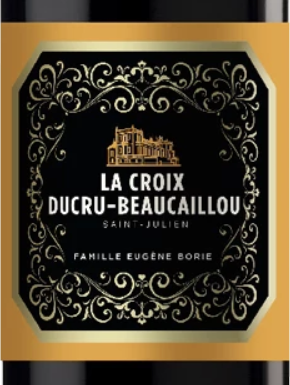
Comes from drastic selections of lots deemed less representative to feature in the Grand Vin. In this very fine Bordeaux vintage, it is an excellent wine that can be enjoyed younger than its elder brother, thanks to its already very silky tannins and perfect balance. The wine is seductive in its finesse and friendliness. The nose is charming, with notes of black fruit. On the palate, everything is suave and elegant. The fruit is present and the finish harmonious.
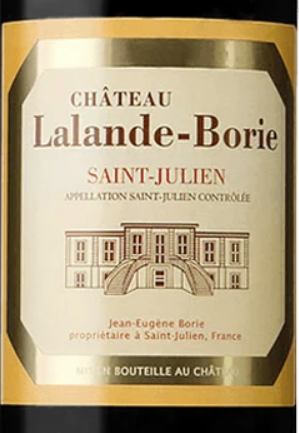
This Saint-Julien, created in 1970 by Jean-Eugène Borie (Bruno Borie's father), was created after the purchase of the Lalande parcel, to which the family added its name to form the Lalande Borie brand. 2015 is an exceptional vintage in Bordeaux. The wine is therefore a total success, while at the same time offering an approach to the great Saint-Julien wines at non-painful prices. The color is intense garnet. The nose is bathed in red and black fruits, with a slight but well-integrated woody note. The palate is greedy, round and nicely structured, with a long, greedy finish. A well-born wine.
1887-1928-1929-1945-1947-1949-1953-1955-1959-1961-1970-1975-1978-1981-1982-1983-1985-1986-1988-1989-1990-1996-2000-2003-2005-2009-2010-2015-2016-2018-2019-2020-2022-2023

Website under construction
Available Soon